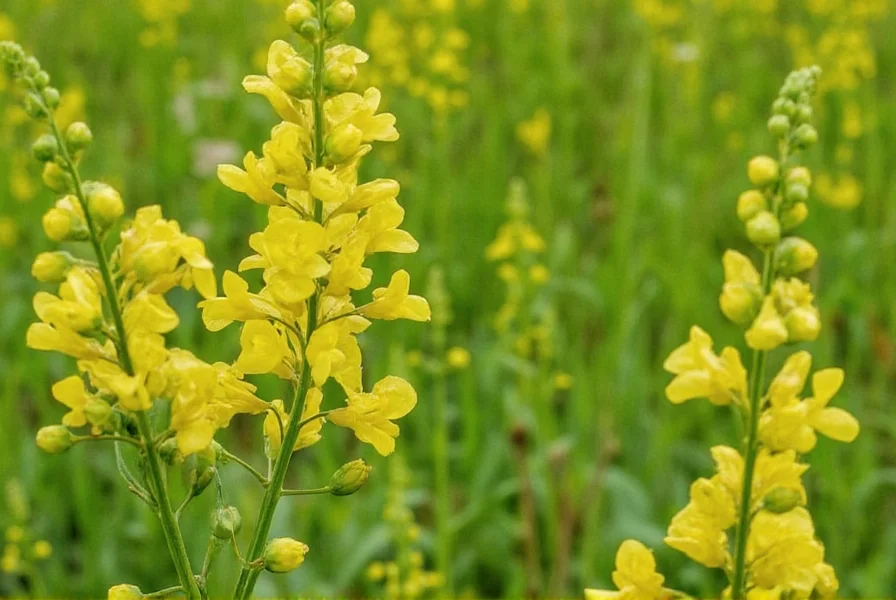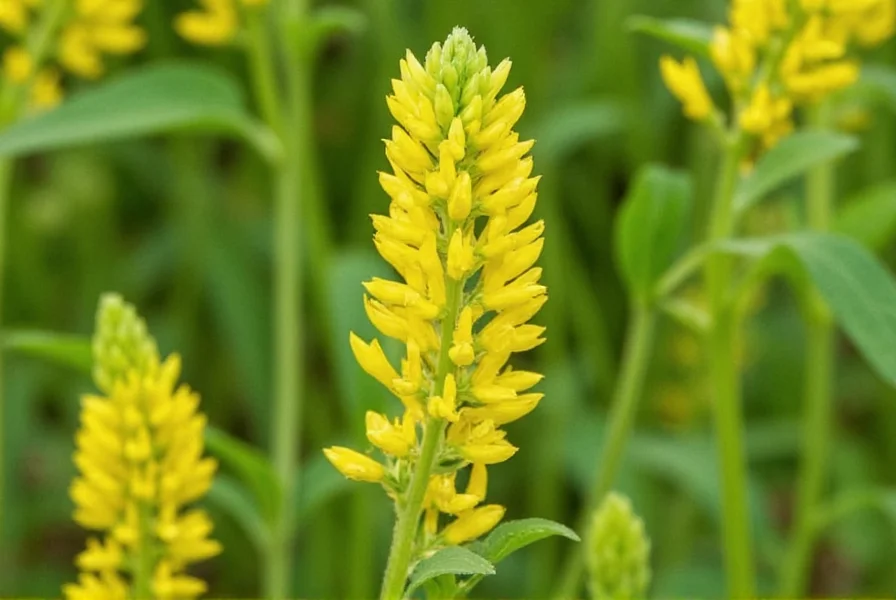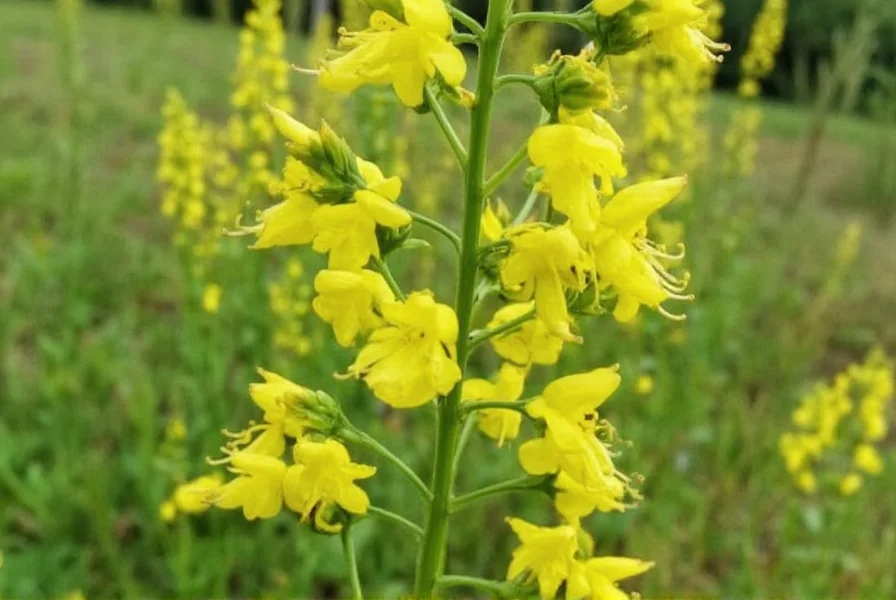Yellow sweet clover stands as one of nature's most versatile legumes, offering ecological benefits while presenting distinctive botanical characteristics. This resilient plant thrives in disturbed soils where many other species struggle to establish, making it particularly valuable for soil restoration projects. Unlike many flowering plants, yellow sweet clover develops its characteristic sweet scent only after drying, a transformation caused by the conversion of coumarin compounds.
Botanical Classification and Scientific Identification
Scientifically known as Melilotus officinalis, yellow sweet clover belongs to the Fabaceae family, sharing characteristics with other legumes like alfalfa and beans. The genus name Melilotus derives from Greek words meaning "honey" and "clover," reflecting its value to pollinators. This biennial plant completes its life cycle over two years, with the first year focused on vegetative growth and the second dedicated to flowering and seed production.
Proper yellow sweet clover identification involves recognizing several key features:
| Identification Feature | Description |
|---|---|
| Flowers | Small yellow pea-like flowers arranged in elongated racemes (4-8 cm long) |
| Leaves | Trifoliate with toothed margins, resembling other clovers but with a more elongated shape |
| Stem | Erect, branched, and grooved with sparse hair |
| Height | Typically 2-5 feet (60-150 cm) when mature |
| Fragrance | Strong sweet scent when dried (due to coumarin) |
Habitat and Growing Conditions
Yellow sweet clover demonstrates remarkable adaptability across various environments. While native to Eurasia, it has successfully naturalized throughout North America, particularly in the Great Plains and western regions. This plant prefers full sun exposure and well-drained soils but tolerates poor, sandy, or gravelly conditions where other plants might fail.
Gardeners interested in yellow sweet clover cultivation should note its preference for neutral to alkaline soils with pH between 6.5 and 8.0. The plant establishes best from seed in early spring or fall, with germination occurring within 7-14 days under optimal conditions. Unlike many cover crops, yellow sweet clover develops an extensive taproot system that can reach depths of 6 feet or more, enhancing its drought tolerance and soil improvement capabilities.

Ecological Benefits and Agricultural Applications
The ecological significance of yellow sweet clover extends far beyond its attractive appearance. As a nitrogen-fixing legume, it converts atmospheric nitrogen into forms usable by other plants through symbiotic bacteria in its root nodules. This natural fertilization process makes yellow sweet clover an excellent cover crop for improving soil fertility without synthetic inputs.
For apiarists and conservationists, yellow sweet clover represents a valuable nectar source for honeybees and other pollinators. The extended blooming period from late spring through summer provides consistent forage when other floral resources may be scarce. Beekeepers often report that honey produced from yellow sweet clover nectar has a distinctive vanilla-like flavor profile.
When considering yellow sweet clover as a cover crop, farmers appreciate its ability to break up compacted soils with its deep taproot while adding organic matter as the plant decomposes. The plant's tolerance for marginal soils makes it particularly useful for reclaiming disturbed lands, though land managers should monitor its potential to become invasive in certain ecosystems.
Differentiating Yellow and White Sweet Clover
Many gardeners and land managers confuse yellow sweet clover (Melilotus officinalis) with its close relative white sweet clover (Melilotus albus). Understanding yellow sweet clover vs white sweet clover differences proves essential for proper identification and management:
- Flower color: Yellow sweet clover displays golden-yellow flowers while white sweet clover produces white or occasionally pale pink blossoms
- Growth habit: Yellow sweet clover tends to be slightly shorter with more branching
- Leaf texture: Yellow sweet clover leaves typically have more pronounced teeth along the margins
- Adaptation: White sweet clover generally tolerates wetter conditions better than yellow varieties
Both species share similar growth patterns and ecological functions, but their different flowering colors provide the most reliable visual distinction in the field.
Traditional Uses and Safety Considerations
Historically, yellow sweet clover has featured in various folk medicine traditions, though modern applications require caution. Early settlers used yellow sweet clover medicinal preparations for respiratory conditions and as a calming agent. However, the coumarin content that creates the plant's pleasant fragrance also presents potential health concerns.
When plant material spoils or becomes moldy, coumarin can convert to dicoumarol, a potent anticoagulant that caused hemorrhagic disease in cattle during the 1920s. This discovery eventually led to the development of warfarin as a medical anticoagulant. While properly dried yellow sweet clover generally poses minimal risk, individuals taking blood-thinning medications should exercise caution with any products containing this plant.

Management and Control Methods
In regions where yellow sweet clover has become invasive, land managers employ various control strategies. Mechanical control through mowing before seed set proves effective for small infestations, while larger areas may require targeted herbicide applications. Biological control options remain limited, though certain weevils show promise for long-term management.
Gardeners seeking yellow sweet clover control should remove plants before flowering to prevent seed dispersal. The plant's extensive seed bank means management efforts typically require multiple seasons for complete eradication. For those cultivating yellow sweet clover intentionally, proper harvesting techniques involve cutting during full bloom for maximum nutritional value while minimizing coumarin content.
Conclusion
Yellow sweet clover represents a fascinating intersection of ecological benefit and botanical complexity. Its nitrogen-fixing capabilities, value to pollinators, and soil-improving properties make it a valuable addition to sustainable agricultural systems when properly managed. Understanding yellow sweet clover identification, growth requirements, and potential challenges allows land managers and gardeners to harness its benefits while mitigating potential drawbacks. As with any introduced species, context-specific knowledge proves essential for determining whether yellow sweet clover serves as a helpful ally or requires careful management in particular ecosystems.











 浙公网安备
33010002000092号
浙公网安备
33010002000092号 浙B2-20120091-4
浙B2-20120091-4